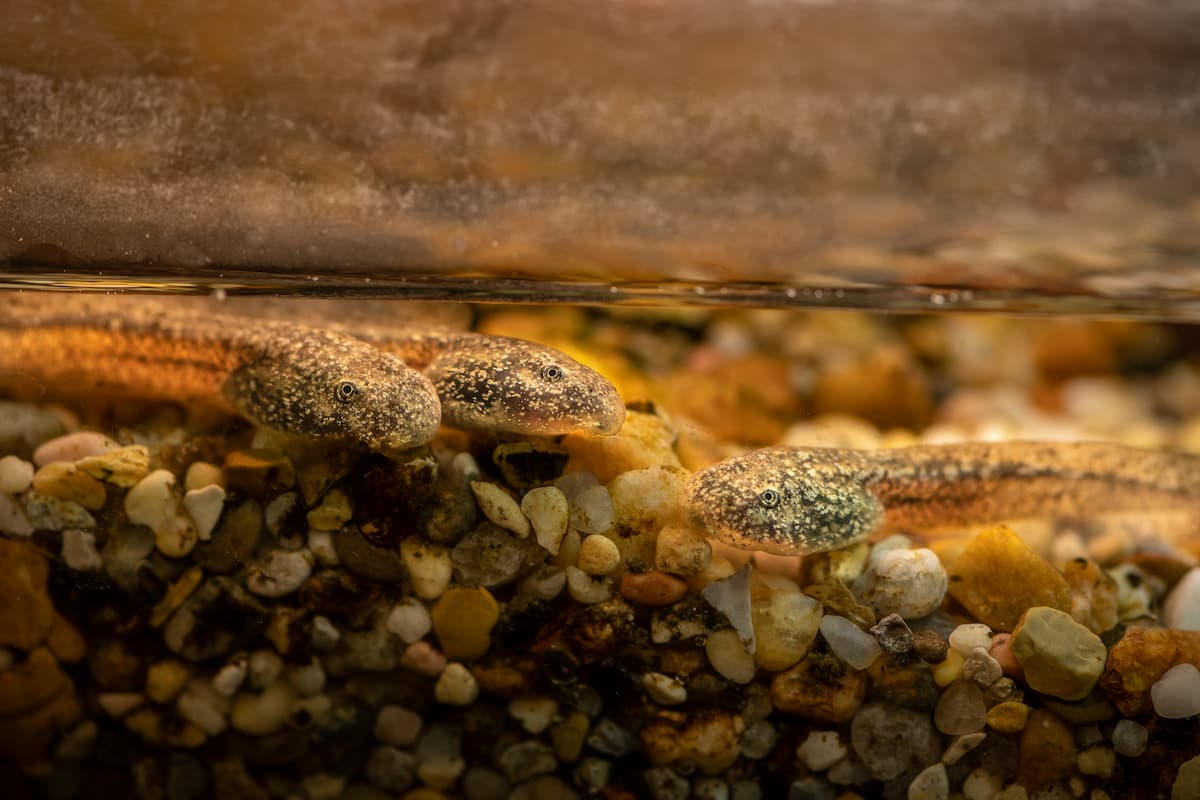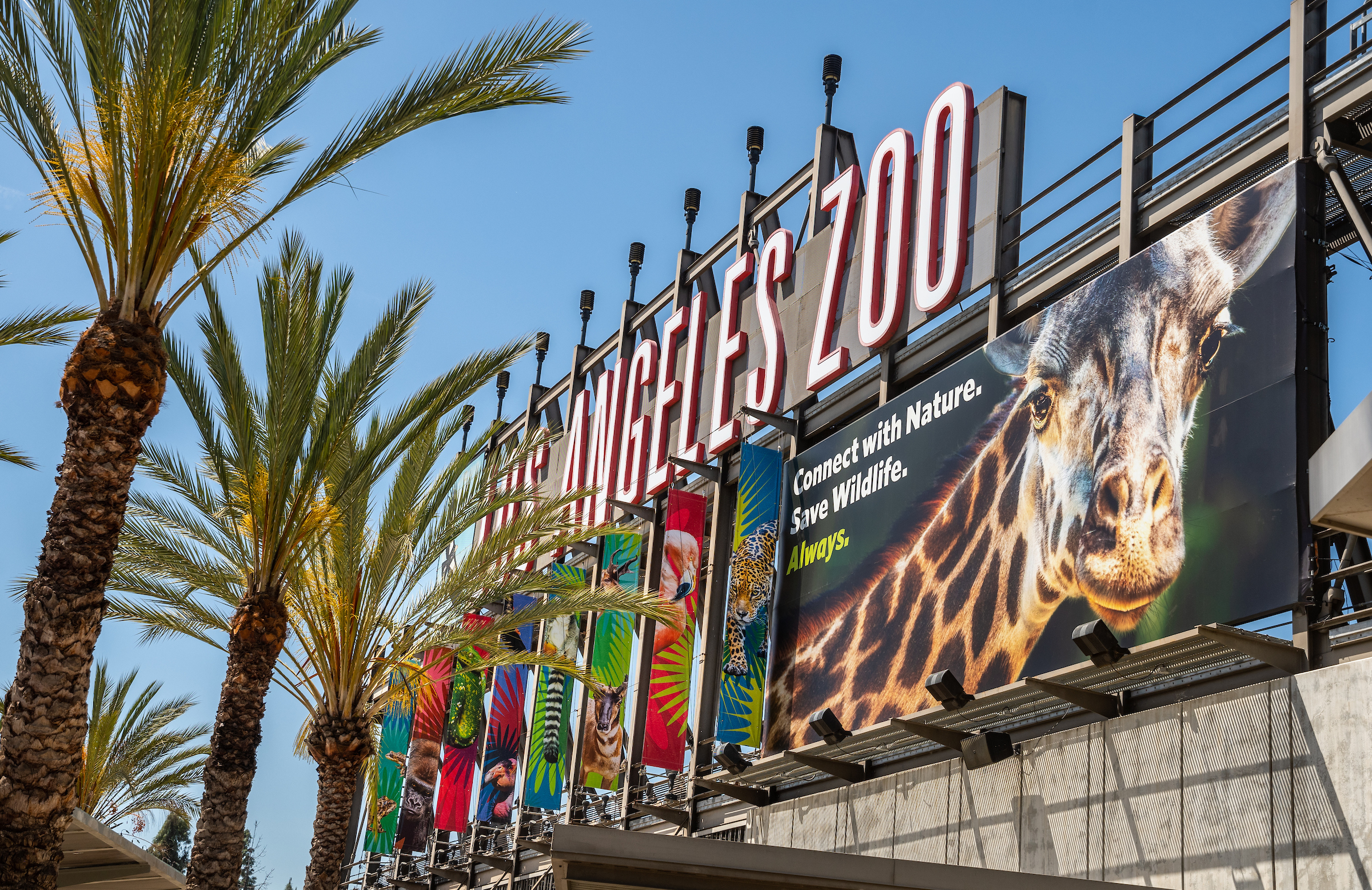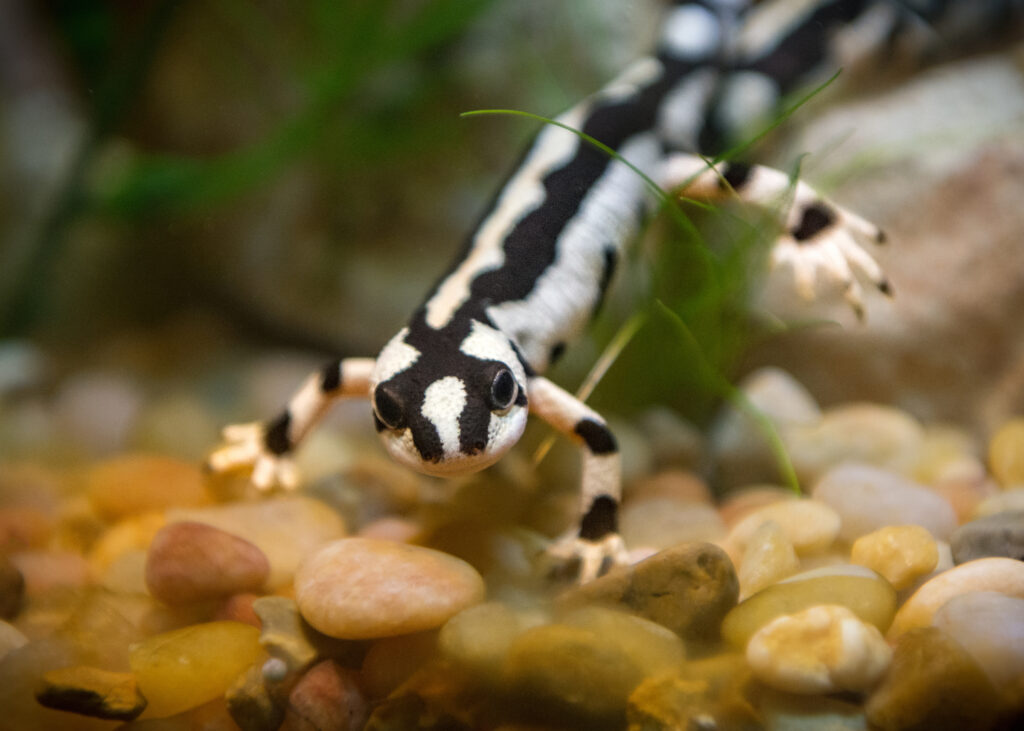
Important advances in water quality science make it possible for Zoo staff to care for an even wider range of aquatic wildlife.
“Water quality is the key in caring for fish and amphibians,” explains Curator of Reptiles, Amphibians, and Fish Ian Recchio. In his 25-plus years at the Los Angeles Zoo, he has seen a steady evolution in technology and advances in water quality science that have made the aquatic habitats at the LAIR and Rainforest of the Americas possible. In addition to rare frogs, newts, turtles, and salamanders, the Zoo is now home to a variety of unusual fish.
“Over the last two decades or so, technology has come a long way,” Recchio says. “In the past, water changes were the key to keeping tropical fish—a lot of water changes—because the particulates (poop and other waste) were being filtered out mechanically. You’d drain the old water, clean out the sponge or whatever filtration was in there, and add fresh water along with chemicals to neutralize additives that are routinely added to tap water that might be safe for us to drink but not for fish to live in. That’s a lot of work with a ten-gallon tank, so you can imagine the process for a huge habitat aquarium.”

Maintaining water quality is a balancing act. Municipal water contains not only chlorine (to control pathogens) and fluoride (which reduces tooth decay), but the water itself varies in its mineral levels and pH depending on the source, the season, and the weather. So, purification is important—but it’s also possible to over-filter and create a situation in which the water actually draws minerals or other compounds from the tissues of the animals living in it. With each water change, an aquarium environment might fluctuate significantly. Fortunately, new technology makes achieving consistency a smoother, if not simpler, task.
Ultraviolet (UV) sterilization has existed for more than a century, but it wasn’t implemented on a large scale for drinking water until the 1950s in parts of Europe. It works because ozone in the Earth’s atmosphere blocks most UV wavelength light, so most bacteria, viruses, and fungi cannot tolerate intense UV exposure, which inhibits their ability to reproduce. Once the undesirable microorganisms are eliminated, biofiltration maintains the environment. This method employs a different array of bacteria to break down fish waste and convert it into harmless elements.
“UV sterilization and biofiltration are state of the art for maintaining water quality,” Recchio observes. “They’re probably less labor intensive in terms of manual work, but they require constant monitoring of water conditions and a thorough grasp of some really sophisticated machinery. Thankfully, our aquarists, Thomas Taira, Micah Hagen, and Michael Joyce are virtuosos at life support systems, and that means a healthy, stable environment for the animals.”
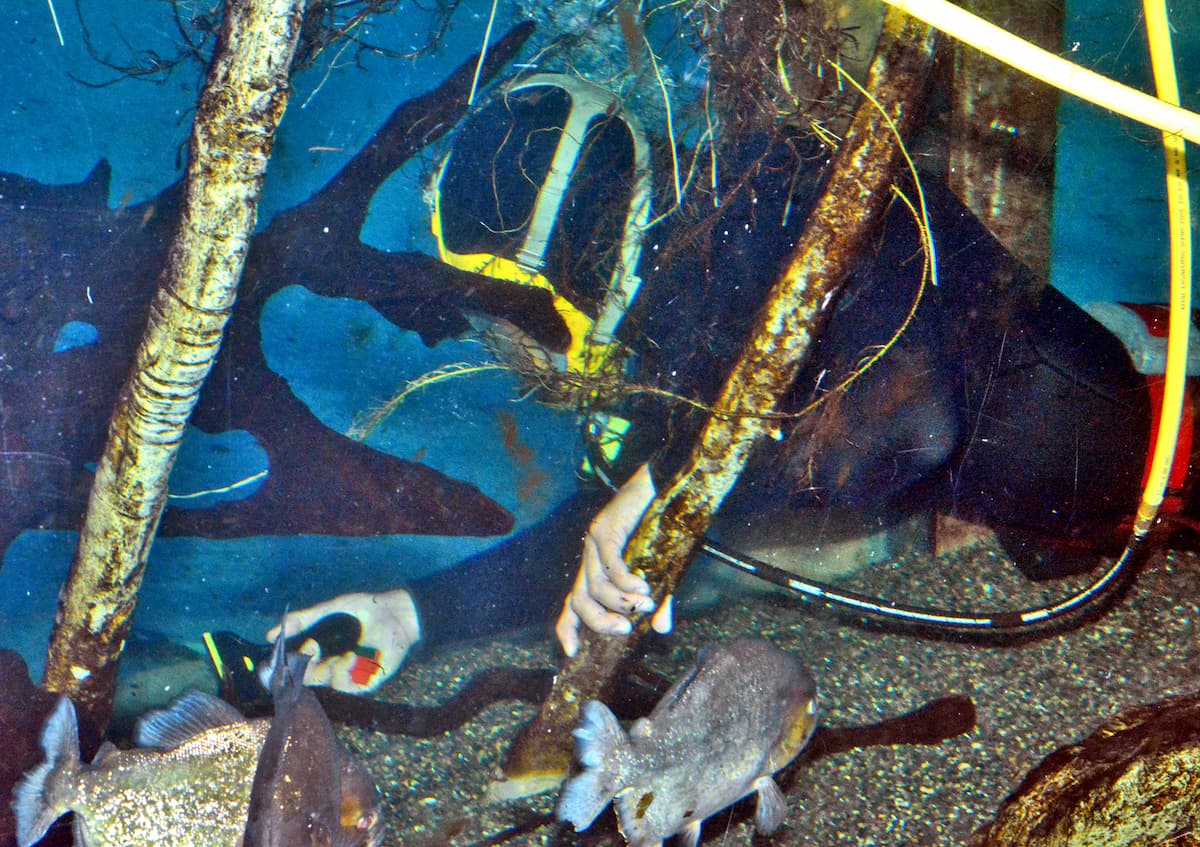
Fish, of course, spend their lives in water and breathe through it, so for them water quality is critical. But amphibians spend the first two stages of life (as eggs and larvae) leading a totally aquatic existence, and as adult frogs, salamanders, and newts, they continue to depend on clean water. Many are also highly sensitive to temperature.
“With species such as the mountain yellow-legged frogs, which have evolved in pristine mountain streams where the water is as clean as it gets, it’s vital to have consistency,” Recchio adds. “In the Zoo’s old reptile house, there was no flexibility for us to create optimal conditions for animals with specific requirements. The LAIR and the Rainforest of the Americas are equipped so that we can monitor and adjust temperature and humidity levels for individual habitats, and UV sterilization and biofiltration enable us to maintain some of the world’s most environmentally sensitive and endangered animals.”
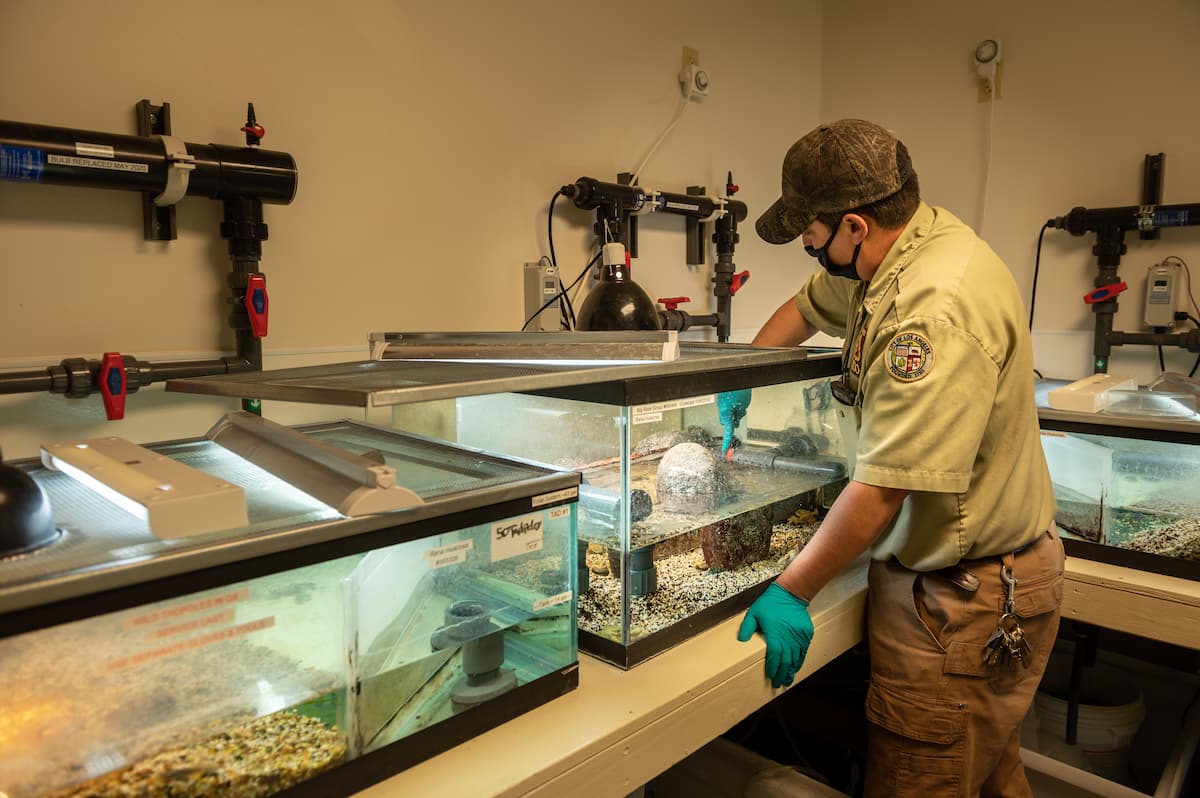
Amphibians and fish are important indicator species. Thriving populations of these animals are a sign of healthy aquatic habitat. It’s true in the wild and it’s true in human care. Thanks to advances in technology and an ever-increasing understanding of these creatures’ needs, they are thriving at the Zoo.
